


Techniques For Discerning Palates

Wine tasting is more than just sipping a delightful beverage; it's a complex art that involves engaging all your senses to fully appreciate the nuances and complexities of wine. Whether you're a novice wine enthusiast or an experienced sommelier, honing your wine tasting techniques can significantly enhance your enjoyment and understanding of this timeless elixir. In this article, we'll explore some essential techniques for discerning palates.
1. Appearance Assessment: Start your wine tasting journey by carefully examining the wine's appearance. Pour the wine into a clean, clear glass and hold it up to the light. Observe its color, clarity, and viscosity. These visual cues can provide valuable insights into the wine's age, grape variety, and potential characteristics.
Color: Note the wine's color, from pale straw for whites to deep ruby for reds. It's a vital indicator of a wine's age and variety. Red wines tend to lighten with age, while white wines darken.
Clarity: Assess the clarity of the wine. A hazy appearance might indicate issues with the wine's production, while crystal clarity suggests quality and careful handling.
Viscosity: Swirl the wine gently in the glass and observe the "legs" or "tears" that form on the side of the glass. Thicker legs indicate a higher alcohol content or residual sugar, which can provide clues about the wine's body.
2. Aroma Exploration: The aroma, or bouquet, of a wine is a critical aspect of the tasting experience. Swirl the wine in your glass to release its aromas, then take a moment to inhale. Wine's bouquet can be quite complex, and it's where the magic begins.
Primary Aromas: Primary aromas are derived from the grape variety itself. For instance, Chardonnay often exhibits scents of green apple or citrus, while Cabernet Sauvignon might have blackberry or black currant notes.
Secondary Aromas: These come from the fermentation process and often include scents like bread, yeast, or vanilla, particularly in the case of oak-aged wines.
Tertiary Aromas: Tertiary aromas develop during aging and might include earthy, spicy, or nutty notes.
3. Sip And Savor: Take a small sip of the wine and let it coat your palate. Assess the wine's taste, noting its flavors, acidity, sweetness, and tannins. Consider the balance and harmony of these elements.
Flavors: Describe the flavors you perceive, which can range from fruity and floral to earthy and spicy.
Acidity: Assess the wine's acidity, which can make it feel crisp and lively on your palate.
Sweetness: Determine the wine's level of sweetness, which can range from bone-dry to dessert-sweet.
Tannins: Note the level of astringency in the wine. Tannins come from grape skins, seeds, and oak aging and can give the wine structure and grip.
4. The Finish: The finish, or aftertaste, is the lingering impression the wine leaves on your palate. A long and pleasant finish is often a sign of a well-structured and balanced wine.
5. Systematic Tasting Notes: Consider keeping a wine journal to record your tasting experiences. Document the wine's details, including its name, producer, vintage, and your observations of appearance, aroma, taste, and finish. Over time, this can help you develop your palate and remember your favorite wines.
6. Wine And Food Pairing: Learning about wine and food pairings can further enhance your wine tasting experience. Certain dishes can complement and enhance the wine's flavors, creating a harmonious dining experience.
7. Practice And Patience: Finally, practice and patience are key. The more you taste and explore different wines, the more refined your palate will become. It's a lifelong journey of discovery and enjoyment.
Wine tasting is an art that involves engaging all your senses to unlock the secrets of this complex and diverse beverage. These techniques can help you develop a discerning palate and a deeper appreciation of the world of wine. Whether you're enjoying a glass with friends or exploring a new varietal, these techniques can enhance your wine tasting journey and make each sip a memorable and enriching experience.
Earth-Saving Crafts
 Environmental Impact
Environmental Impact
One of the most significant aspects of earth-saving crafts is their direct impact on the environment. By reusing materials, these crafts reduce the demand for new resources, saving energy and conserving raw materials. Crafting from waste materials not only lowers carbon footprints but also lessens the burden on landfills. It's a small, yet crucial, step toward mitigating the detrimental effects of overconsumption and waste generation.
Empowering Individuals
Engaging in earth-saving crafts is empowering. It fosters a sense of self-sufficiency and self-expression. Crafting allows individuals to take control of their environmental impact and make conscious choices. It encourages people to think outside the box and find new uses for old items, thereby reducing their reliance on mass-produced, environmentally-harmful goods.
A Journey Towards Health And Well-Being
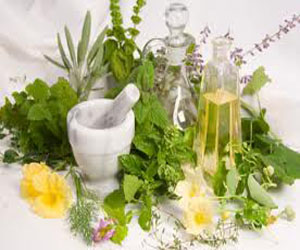 Safer Skincare: Personal care products, such as cosmetics and skincare items, are notorious for containing synthetic chemicals. Safer alternatives often come in the form of natural or organic products. These are made with ingredients sourced from nature, reducing the risk of skin irritation, allergies, or exposure to harmful substances.
Safer Skincare: Personal care products, such as cosmetics and skincare items, are notorious for containing synthetic chemicals. Safer alternatives often come in the form of natural or organic products. These are made with ingredients sourced from nature, reducing the risk of skin irritation, allergies, or exposure to harmful substances.
Chemical-Free Cleaning: Conventional household cleaning products often contain a mix of harsh chemicals, many of which can be harmful to both human health and the environment. Safer alternatives include natural cleaning products, such as vinegar, baking soda, and plant-based cleaners, which effectively clean without the toxic residue.
Nutrition And Food Choices: Safer alternatives extend to our diet. Organic produce, for instance, reduces exposure to pesticides and synthetic additives. Opting for whole foods over processed ones is another way to embrace a healthier approach to nutrition.

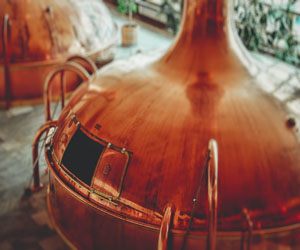

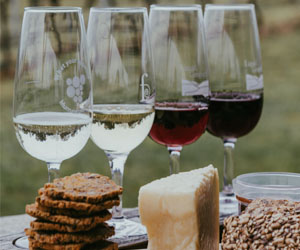

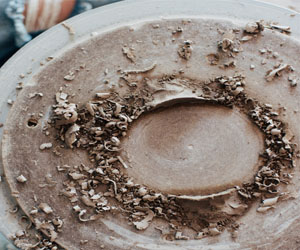
A Tranquil Journey To Inner Peace
 The Essence Of Herb Garden Meditation
The Essence Of Herb Garden Meditation
Meditation is a practice that has been revered for centuries for its ability to calm the mind, reduce anxiety, and promote emotional balance. When combined with the natural beauty and fragrance of an herb garden, meditation takes on a whole new dimension. Herb garden meditation involves spending time amidst your herbal haven, embracing the serenity, and harnessing the therapeutic benefits of herbs.
Preparing Your Herb Garden
Before embarking on a journey of herb garden meditation, it's essential to create an inviting space. Your herb garden should be well-maintained, with vibrant herbs and a comfortable spot for sitting or lying down. A soft blanket, a cushion, or a garden bench can be an ideal choice to enhance your comfort. Ensure that your chosen spot is free from distractions and noise, so you can fully immerse yourself in the meditation experience.
The Meditation Process
Begin your herb garden meditation by finding a comfortable seated or lying position. Close your eyes and take a few deep, calming breaths. Feel the earth beneath you and the gentle rustle of the herb leaves. Let your senses absorb the natural aromas, the warmth of the sun, and the soft caress of the breeze.
As you breathe in, focus on the scents around you. The invigorating aroma of basil, the calming fragrance of lavender, or the zesty scent of mint can all inspire different aspects of your meditation. You can choose herbs based on their individual healing properties or simply let your intuition guide you.
Crafting Creativity, Tradition, And Skill
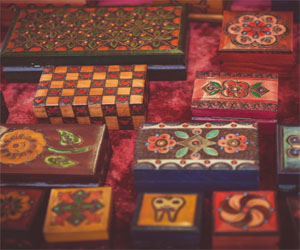 A Marriage Of Form And Function: At its core, woodworking combines form and function. Craftsmen and artisans meticulously design and create objects that are not only visually appealing but also serve practical purposes. From finely crafted tables and chairs to elegant cabinets, woodworking is a harmony of aesthetics and utility.
A Marriage Of Form And Function: At its core, woodworking combines form and function. Craftsmen and artisans meticulously design and create objects that are not only visually appealing but also serve practical purposes. From finely crafted tables and chairs to elegant cabinets, woodworking is a harmony of aesthetics and utility.
The Craftsmanship Ethic: Woodworking is synonymous with craftsmanship. The commitment to precision, attention to detail, and dedication to quality are the cornerstones of this craft. Artisans take pride in their ability to turn raw timber into exquisite creations, and the art of craftsmanship is passed down from one generation to the next.
Modern Technology Meets Tradition: The world of woodworking has evolved over time. While traditional hand tools and joinery techniques still hold a special place, modern technology has ushered in a new era of woodworking. Computer-aided design (CAD) and computer numerical control (CNC) machines have revolutionized the field, allowing for precise and intricate creations that were once challenging to achieve.
A Medium For Creativity: Woodworking is a canvas for creative expression. Artists and woodworkers find inspiration in the natural beauty of wood, its unique grains, and its warm tones. The process of envisioning a project and bringing it to life is a journey of self-expression, where each piece becomes a reflection of the creator's imagination and skill.
Sustainability And Responsibility: The world of woodworking is increasingly aligned with sustainability. Responsible sourcing of wood, recycling, and eco-friendly practices have become central to the craft.
 Floral Designs: Flowers are a prevalent theme in embroidery, symbolizing beauty, growth, and life. From delicate daisies to elaborate roses, floral designs are celebrated for their elegance and versatility.
Floral Designs: Flowers are a prevalent theme in embroidery, symbolizing beauty, growth, and life. From delicate daisies to elaborate roses, floral designs are celebrated for their elegance and versatility.
Geometric Patterns: Geometric shapes and repetitive patterns are a staple in many traditional embroidery designs. These symmetrical arrangements create a sense of order and balance.
Animal Motifs: Animals, both domestic and wild, are often featured in embroidery designs. They can represent local fauna, mythological creatures, or personal totems, adding an element of storytelling to the art.
Religious And Symbolic Designs: Embroidery often incorporates religious symbols, such as crosses or mandalas, or other motifs that hold cultural or spiritual significance.
Contemporary Innovations: In the modern era, embroidery designs have evolved to embrace contemporary aesthetics and innovations. Artists and designers experiment with unconventional materials, techniques, and themes, pushing the boundaries of traditional embroidery.
A Global Celebration Of Brews
 Beer And Celebration: Beer has long been an integral part of celebrations and rituals across the world. In Germany, Oktoberfest is a cultural phenomenon that draws millions of visitors from around the globe. In Ireland, St. Patrick's Day is synonymous with toasts of Guinness and other Irish stouts. In the Czech Republic, beer is often enjoyed during traditional festivals and holidays. Such celebrations highlight the cultural significance of beer and its role in fostering community and camaraderie.
Beer And Celebration: Beer has long been an integral part of celebrations and rituals across the world. In Germany, Oktoberfest is a cultural phenomenon that draws millions of visitors from around the globe. In Ireland, St. Patrick's Day is synonymous with toasts of Guinness and other Irish stouts. In the Czech Republic, beer is often enjoyed during traditional festivals and holidays. Such celebrations highlight the cultural significance of beer and its role in fostering community and camaraderie.
Beer And Food Pairing: Beer culture diversity extends beyond the beverage itself to the world of gastronomy. Beer and food pairing is a practice celebrated in many cultures. The hearty brews of Germany are perfect companions to sausages and pretzels, while the delicate flavors of sushi and sashimi in Japan are enhanced by crisp lagers. In the United States, craft beer enthusiasts have elevated beer and food pairings to an art form, experimenting with intricate combinations that rival wine pairings in complexity and creativity.
Traditional Brewing Techniques: Many regions have preserved their traditional brewing techniques, passed down through generations. For example, the indigenous beer of Africa, known as "sorghum beer" or "umqombothi," is brewed using ancestral methods. Similarly, in South Korea, "makgeolli" continues to be made using time-honored techniques, showcasing the beauty of ancient brewing traditions.
The Craft Beer Revolution: The craft beer movement, particularly prominent in the United States, has sparked a wave of innovation that celebrates diversity in beer. Craft brewers embrace unconventional ingredients, styles, and experimental techniques. This innovation has extended to diverse beer styles like sours, barrel-aged beers, and hybrid concoctions. The movement has led to a global renaissance in brewing, inspiring countless craft breweries worldwide to push the boundaries of beer culture.